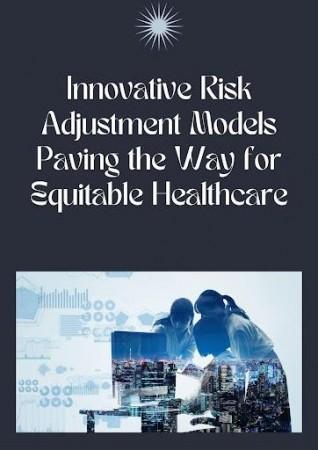
Healthcare analytics has evolved substantially in recent decades, with risk adjustment models becoming essential for predicting healthcare costs and ensuring equitable compensation. Srinivas Reddy Komanpally, a healthcare analytics expert, examines the mechanisms and applications of these models, highlighting their significant impact on improving efficiency and fairness in the modern healthcare ecosystem.
The Evolution of Risk Adjustment Models
Risk adjustment models have evolved since the 1980s, moving from basic demographic factors to sophisticated tools that use complex clinical data. Modern models like HCC and CDPS now utilize electronic health records (EHRs) and ICD codes to provide a detailed understanding of patient health and predict future healthcare needs.
Mechanisms Behind Risk Adjustment
Risk adjustment models use demographic information and diagnostic data for risk assessment. The HCC model uses ICD codes to categorize diagnoses hierarchically for Medicare, while the CDPS model, used in Medicaid, incorporates ICD and pharmacy data. These models align healthcare payments with each individual's expected care cost.
Applications in Various Healthcare Settings
At the core of these models are two primary data inputs: demographic information and diagnostic data. Demographic factors, including age and gender, serve as a foundation for risk assessment, while EHRs contribute granular clinical information like diagnoses, procedures, and laboratory results. The HCC model, used in Medicare, categorizes diagnoses using ICD codes to represent patient complexity. The CDPS model, employed in Medicaid, incorporates ICD codes and pharmacy data for comprehensive risk profiles. Both models translate risk scores into financial terms, aligning healthcare payments with each individual's expected care cost.
Challenges and Limitations
Despite their widespread adoption, risk adjustment models face several challenges. The quality and accuracy of input data are crucial, with issues like incomplete diagnostic coding and variations in clinical documentation potentially compromising the validity of risk scores. The complexity of these models can also pose interpretability challenges, creating skepticism among stakeholders. Furthermore, the financial implications of risk adjustment may lead to practices like upcoding, where diagnoses are exaggerated to increase payments. Ethical considerations add another layer of complexity, as there are ongoing debates about whether these models adequately account for social determinants of health and whether they might inadvertently perpetuate existing health disparities.
Future Directions: AI and Machine Learning Integration
The future of risk adjustment in healthcare analytics lies in integrating emerging technologies such as artificial intelligence (AI) and machine learning (ML). These technologies promise to enhance the accuracy and adaptability of risk prediction models, enabling more personalized risk assessments. Future models are expected to incorporate broader data sources, including social determinants of health and real-time clinical data, predicting costs, specific health outcomes, and quality metrics. Efforts are underway to refine these models to better capture the health status of diverse populations, enhance fairness, and prevent gaming of the system.
Towards a Balanced Healthcare Financing System
Risk adjustment models are crucial in creating a more equitable healthcare financing system by accounting for the varying health needs of different patient populations. Their mechanisms, applications, and future directions underscore their role in supporting the delivery of appropriate care to all individuals, regardless of their health status or expected healthcare costs. As healthcare systems evolve, the refinement and application of these models will be central to balancing financial sustainability with quality care delivery.
In conclusion, Srinivas Reddy Komanpally emphasizes the indispensable role of risk adjustment models in shaping modern healthcare analytics. As these models continue to evolve with the integration of advanced analytics and broader data sources, they will play a pivotal role in achieving a healthcare system that fairly allocates resources, incentivizes high-quality care, and ultimately improves health outcomes for all patients.









